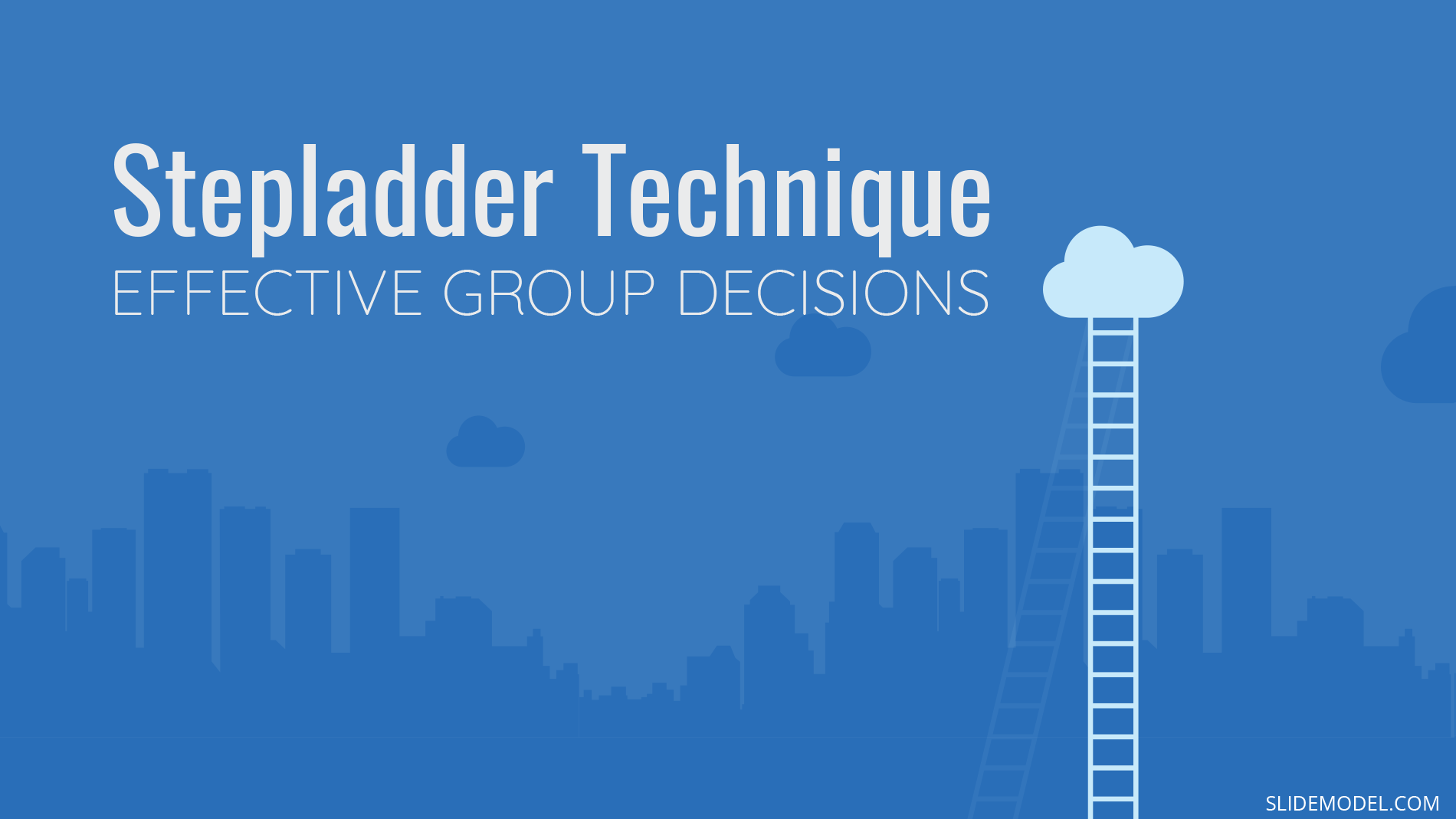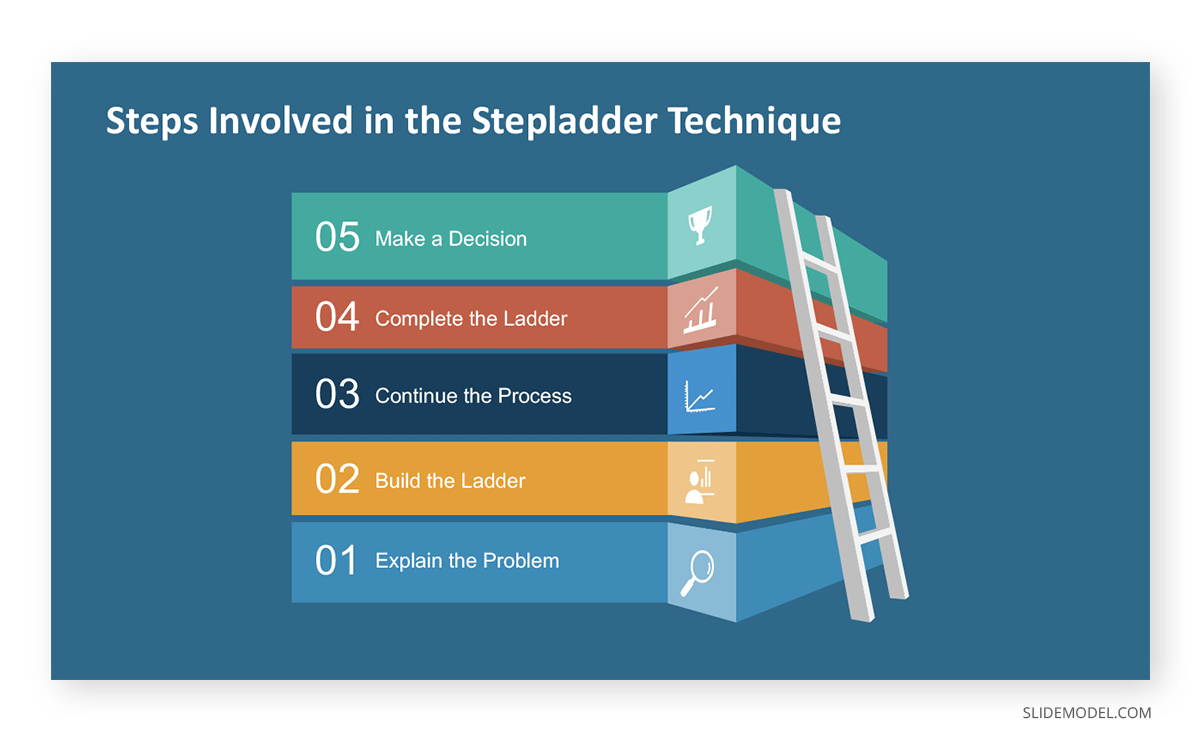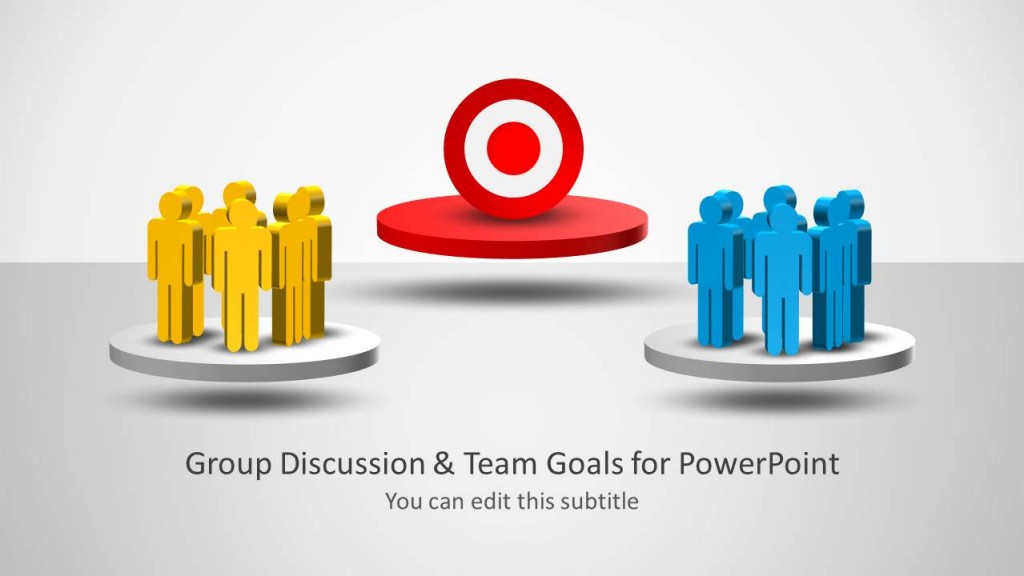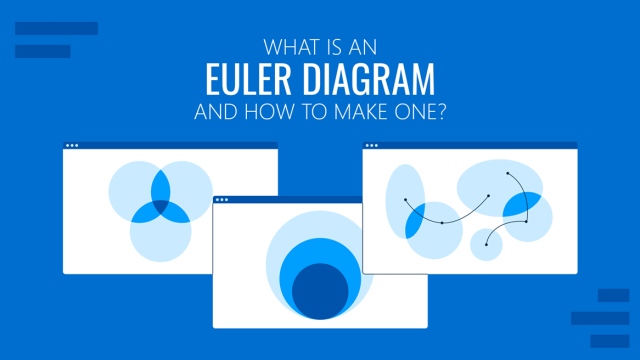
Making decisions in groups can be difficult; making good decisions can be even harder. However, such decision making might be a part of a contractual requirement, such as between consortium members, business partners, at Annual General Meetings, etc. The Stepladder Technique can help provide a step-by-step approach to help make effective group decisions.
What is the Stepladder Technique of Decision Making?
The Stepladder technique of decision making makes group decisions more effective by enabling each group member to contribute individually before being affected by someone else’s influence. This helps increase the pool of ideas and discourages influential individuals from overpowering group members with an unbalanced decision. Stepladder is effective in small groups with 4-7 group members, which is also an important factor.
When is the Stepladder Technique Used?
Stepladder is a step-by-step technique that ensures that all group members contribute to the discussion, and no one is left behind. Since group members can hide behind other members to either give up their autonomy, Stepladder ensures that members who are in the group are balanced out; furthermore, the technique helps gather a wide variety of points of view to help reach the best decision.
Example: Brick and Mortar vs Online Decision
Let’s assume a decision to be taken by four business partners regarding either to begin an online store to sell their merchandise or to continue with their brick and mortar outlets. In such a case, one business partner might not favor opening an e-store because of his lack of understanding of e-commerce. He might also be influential, looking to convince other members into not going beyond their physical outlets.
In such a case using the Stepladder technique can enable a pool of ideas and points of view, where no member will be left out when expressing an opinion. In such a case, other business partners can provide practical examples of good rivals and business models. This can help prove that their business might not grow or even find it hard to survive in the long run without going online.
In this example, it might be possible for other group members to convince their business partner to start a small-scale setup for their online store, test, and prove if this is effective for moving their business forward in the right direction. This is because the technique uses objectivity and ensures participation of each group member to ensure other members influence no member to decide in favor of what they want alone.
Steps Involved in the Stepladder Technique
The Stepladder technique consists of five key steps: explaining the problem, building the ladder, continuing the process, completing the ladder, and eventually reaching a unified decision.
Step 1: Explain the Problem
The first step of the Stepladder technique entails explaining the problem to everyone. This is an excellent opportunity to create a PowerPoint presentation to workshop with your team to think about the situation. Every member in the group is included and given time to think about the issue, to enable objective thinking and effective decision-making.
Step 2: Build the Ladder
After giving group members time to think, a core group of two group members will discuss the problem. During this time, the two members are given private space to discuss the situation objectively. This is the beginning of building the ladder, where the initial views regarding the problem begin to pour in.
Step 3: Continue the Process
During this step, a third member is added to the discussion, which explains his perspective before the other two members express their views. This eliminates outside influence affecting the third individual to provide an opinion regarding the problem objectively. Once the third individual is done speaking, the rest of the two members can share their perspectives.
Step 4: Complete the Ladder
As the ladder continues to grow, the fourth member enters the discussion to express their views before listening to what others discuss. This process continues till the ladder is complete and each member has had their say. To reduce the time spent in explaining details regarding each person’s point of view, group members already in the room can summarize their discussion to the incoming member once the last one has expressed their opinion.
Step 5: Make a Decision
The final step seeks to reach a decision. The decision-making process can only take place once everyone has been heard. The group can make an effective decision based on all the facts, points of view, and ideas expressed by everyone in the room. It is pretty likely that everyone would have presented their arguments by this stage, and everyone would be clear regarding the available options for moving forward with a decision.

Pros and Cons of the Stepladder Technique of Decision Making
The Stepladder technique is not going to be needed every time a group decision is made. However, it can be an excellent tool for making effective decisions when critical thinking is required to resolve complex issues. Similarly, the technique can be a good way of eliminating resentment among decision makers and to make sure that everyone has been given the chance to express their views before a decision is made objectively. Let’s take a look at the pros and cons of using this decision-making technique.
Pros
- The stepladder technique promotes the participation of each group member, providing them with a proper mechanism to have their say.
- Stepladder technique can help alleviate resentment among group members by allowing each member to participate on a mandatory basis. Once a member has expressed a point of view, they cannot claim that they were not heard or made a part of the decision-making process. Success and failure hence become collective.
- Stepladder technique helps reduce the chances of arm twisting and bullying by influential group members.
- Stepladder can help reduce the chances of a deadlock during group decision making.
- Using Stepladder, group members can help acquire a larger pool of ideas to resolve a problem and make effective decisions.
- Stepladder is helpful in finding solutions for complex issues which require collective insight from experts and stakeholders to help find a solution.
Cons
- If not conducted with the true spirit of participation, Stepladder can be reduced to tokenism, where influential members use it to give the impression of inclusion and participation. For example, if the new members entering the room to express their views are interrupted or influenced, decision making can be reduced to mere tokenism to appease influential group members.
- Some powerful groups within an organization might use Stepladder to give the impression of inclusion while bullying other group members and reducing the entire exercise to a smokescreen.
- Stepladder might not be helpful for quick decision making, as the process might take a lot of time.
- Stepladder does not necessarily ensure an environment where a deadlock cannot persist. Group members might also be already packed in lobbies, and the process might not be as transparent as it seems.
- Stepladder might not be practical for huge groups, as it might turn into an exercise in futility. It is only applicable when a small group of 4-7 people is involved, since it’s not practical to use the technique where dozens of group members are to be included. A simple show of hands or some other voting mechanism might be more effective for such decisions.
- Stepladder is a systematic approach to find solutions to problems; however, it might not be practical where multiple choices are expected to be made in a single or a few meetings.
Final Words
Stepladder is a technique best suited for small groups, where 4-7 people are involved in making a decision. The method allows inclusiveness and enables gathering ideas from all group members to ensure everyone is heard. This mechanism can also help encourage shy or less influential members to pitch in their statements to contribute to the decision-making process.
For this technique to be successful, the group needs to follow the method in its true spirit. While every group might have one or two people who might still want to exert their influence on the group, Stepladder can help improve the chances for other group members to present their point of view and influence the decision-making process.
Stepladder can be effective in reducing, if not eliminating, resentment among group members, as a collective decision also makes everyone accountable for the outcome of the decision. This can help encourage every member to be considerate about their suggestions as any success or failure is likely to affect them collectively.
For example, suppose the marketing team from an organization uses Stepladder to determine the marketing strategy for a brand, and the plan fails. In that case, they are all likely to feel the pinch. Whereas the success of such a strategy might enable everyone to take credit for collective decision-making. This is why Stepladder can help improve accountability, transparency, inclusiveness, and better group decisions. While possibly reducing bickering, rivalries, and politics within a group. Also, check our article about decision-making for business and our collection of decision making PowerPoint templates.




